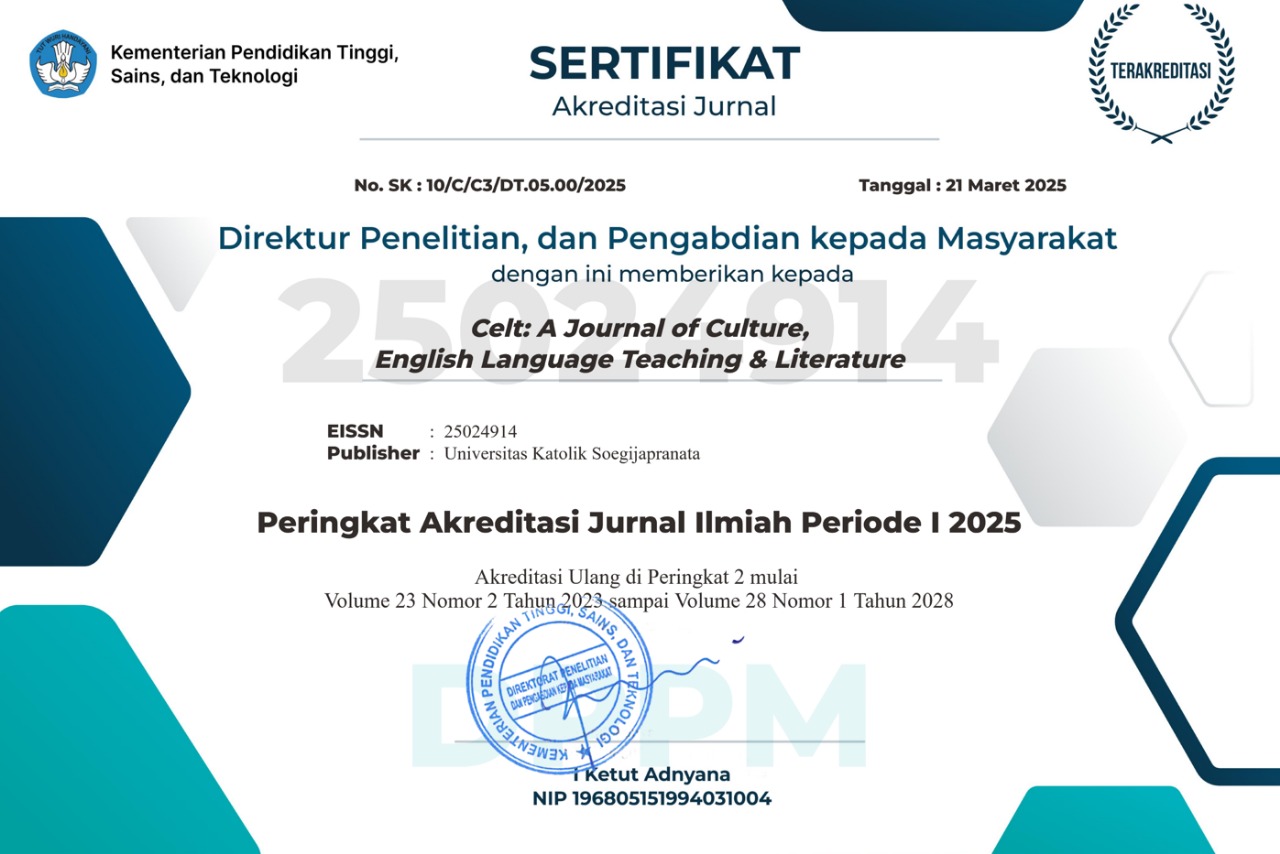Emotional, Behavioral and Cognitive Engagement in Language Learning: The Experience of the Successful Learners
Abstract
Keywords
Full Text:
PDFReferences
Ainley M. (2012). Students’ Interest and Engagement in Classroom Activities. In Christenson, S., Reschly, A., Wylie, C. (Ed.), Handbook of Research on Student Engagement. Springer, Boston, MA. https://doi.org/https://doi.org/10.1007/978-1-4614-2018-7 13.
Axelson, R., & F. A. (2010). Defining student engagement. In Change: The Magazine of Higher Learning, 43 (pp. 38–43).
Best, J. W., & Kahn, J. V. (2014). Research in Education (10th ed). Pearson Education Limited.
Carroll, M., Lindsey, S., Chaparro, M & Winslow, B. (2019). An applied model of learner engagement and strategies for increasing learner engagement in the modern educational environment. In Interactive Learning Environments, 1 (15). https://doi.org/https://doi.org/10.1080/10494820.2019.1636083
Creswell, J. W., & Creswell, J. D. (2018). Research Design Qualitative, Quantitative, and Mixed Methods Approaches. (5th ed.). SAGE.
Dao, P., Ngunyen, M.X.N.C., & Iwashita, N. (2019). Teachers’ perception of learner engagement in L2 classroom task-based interaction. In The Language Learning Journal, (pp. 1–14). https://doi.org/https://doi.org/10.1080/09571736.2019.1666908
Finn, J. D., & Zimmer, K. (n.d.). Student engagement: What is it? Why does it matter? (& C. W. S. L. Christenson, A. L. Reschly, Ed.). New York: Springer.
Fredericks, J., Blumenfeld, P., & Paris, A. (2004). School engagement: Potential of the concept, state of evidence. In Review of Educational Research, 74(1), (pp. 59–105).
Fredricks, J., Filsecker, M & Lawson, M. (2016). Student engagement, context, and adjustment: Addressing definitional, measurement, and methodological issues. In Learning and Instruction. 43 (pp. 1–4).
Griffiths, C. (2015). What have we learnt from ‘good language learners’? ELT Journal, 69, 425–433.
Ivone, F. M., & Renandya, W. A. (2019). Extensive Listening and Viewing in ELT. TEFLIN Journal, 30(2), 237–256.
Kasbi, S., & Shirvan, M. E. (2017). Ecological understanding of foreign language speaking anxiety: emerging patterns and dynamic systems. Asian-Pacific Journal of Second and Foreign Language Education, 2(1), 1–20.
Krashen, S, D. (1982). Principles and Practice in Second Language Acquisition. Oxford, Pergamon Press.
Lee, J. S., & Hsieh, J. C. (2019). Affective variables and willingness to communicate of EFL learners in in-class, out-of-class, and digital contexts. System, 82, 63–73.
Maru, M. G., Dukut, E. M., & Liando, N. (2018). Beyond Essay Structure: Competence and Literacy. Celt: A Journal of Culture, English Language Teaching & Literature, 18(2), 282–296.
Nation, I. S. P, & Newton, J. (2009). Teaching ESL/EFL listening and speaking. London: Routledge.
Oga-Baldwin, W. L. Q. (2019). Acting, thinking, feeling, making, collaborating: The engagement process in foreign language learning. System, 86. https://doi.org/doi: 10.1016/j.system.2019.102128
Pamuji, K. D., Waring, R., & Kurniawan, E. (2019). EFL Teachers Experiences in Developing L2 Proficiency through Extensive Listening. TEFLIN Journal, 30(2), 257–273.
Philp, J., & Duchesne, S. (2016). Exploring engagement in tasks in the language classroom. In Annual Review of Applied Linguistics, 36 (pp. 50–72).
Renandya, W. A., Jacobs, G.M., Krashen, S., & Ong, C. H. M. (2019). The power of reading: Case histories of second and foreign language readers. Language and Language Teaching, 8(1), 10–14.
Skinner, E. A., & Pitzer, J. R. (2012). Developmental dynamics of student engagement, coping, and everyday resilience. In & C. W. S. L. Christenson, A. L. Reschly (Ed.), Handbook of research on student engagement (pp. 21–44). New York: Springer.
DOI: https://doi.org/10.24167/celt.v19i2.1118
Copyright (c) 2020 Celt (A Journal of Culture, English Language Teaching & Literature)
| pISSN (print): 1412-3320 | eISSN (online): 2502-4914 |











